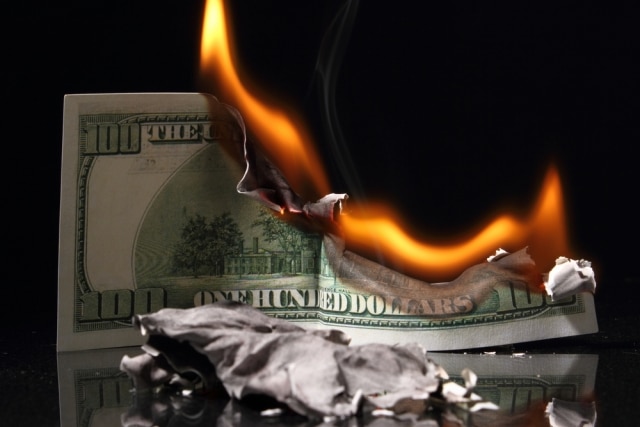For the past several weeks, the drilling industry — hammered by bad financial results — has begun promoting its next big thing: the Utica shale, generating the sort of headlines you might have seen five years ago, when the shale drilling rush was gaining speed. “Utica Shale Holds 20 Times More Gas Than Previous Estimates”, read one headline. “Utica Bigger Than Marcellus”, proclaimed another.
The reason for the excitement was a study, published by West Virginia University, that concluded the Utica contains more shale gas than many estimates for the Marcellus shale, a staggering 782 trillion cubic feet.
“This is a landmark study that demonstrates the vast potential of the Utica as a resource to complement – and go beyond – what the Marcellus has already proven to be,” Brian Anderson, director of West Virginia University’s Energy Institute, told the Associated Press.
But those considering investments based on the Utica’s potential may want to pause and consider the shale industry’s long history of circulating impressive predictions, later quietly downgraded, while spending far more than they earn.
“The industry has not been generating enough money to cover its capital spending and dividends,” Fidelity Investments energy fund manager John Dowd told Barrons.
Indeed, while it is clear that the shale drilling rush has produced large amounts of oil and gas, (alongside wastewater and other environmental impacts), the financial prosperity promised by its backers has not seemed to materialize.
Burning Through Cash
Companies like Chesapeake Energy, the nation’s second largest producer of natural gas and one of the most aggressive advocates of the shale rush nationwide, have been hammered hard by low oil prices and high costs in 2015.
“Chesapeake is expected to post a net loss of $3.18 billion this year, based on the average of eight analysts’ estimates compiled by Bloomberg. That would be the company’s steepest annual loss since 2009,” Bloomberg reported last week as Chesapeake announced that it was eliminating dividends paid out to investors.
“Only twice in the past two decades has the second largest gas producer reported positive cash flow,” Bloomberg added.
In other words, even while the price of oil and gas touched record highs, Chesapeake and others in the industry were burning through cash. All told Chesapeake Energy’s market capitalization has plunged from highs over $21 billion in 2011 to just $5.9 billion today – meaning that investors in the company have lost billions of dollars over the past four years.
And now, as oil prices have dropped to below $50 a barrel, down from highs of roughly $140 in 2008, a wave of bankruptcies and stock price collapses has begun to sweep the industry, with many analysts predicting more hard times to come.
“The top 60-odd shale firms are making a return of roughly zero on the swollen stock of capital they employ,” the Economist reported earlier this month. “With less cash flowing in, shale firms need to slash their investment by over two-thirds if they are to balance their books.”
For those living in heavily drilled areas, job losses might be the most visible signs of the industry’s downturn. Two of the largest oilfield services companies, Halliburton and Baker Hughes, have cut over 25,000 jobs — more than double what they projected in February — due to the downturn. Consol Energy recently announced it would lay off 10 percent of its workforce. And Weatherford International recently said it would lay off 11,000 workers, 10 percent more than it had projected.
Hype and Downgrade
Wildcatters and their supporters have rarely been shy about promoting the economic potential from drilling. Aubrey McClendon, former CEO of Chesapeake Energy, ousted over undisclosed risk-taking and loans revealed by investigative reporters at Reuters, once called the Utica the “biggest thing to hit Ohio since the plow.”
But under McClendon, Chesapeake Energy’s business model was in no small part based on ginning up interest in one shale play after another, then selling that acreage to other drillers at a vastly increased price.
In comments during 2008 conference call, when Chesapeake’s stock was collapsing, McClendon was unusually blunt about how Chesapeake worked.
“That includes a part of our business model that apparently some people still have a hard time understanding, and I think there are two ways to make money in the business. One is to drill wells and just have the gas produce out over time. But there are other ways as well, and that is doing these various asset monetizations. I think when we’re through with 2008, you will see that our company will have monetized somewhere between $10 billion to $12 billion of assets during the year including drilling carries and would have an indicated profit margin if you will on that of about $10 billion. I can assure you that buying leases for X and selling them for 5X or 10X is a lot more profitable than trying to produce gas at $5 or $6 mcf,” Mr. McClendon said.
In other words, the country’s second largest producer of natural gas was in the business of flipping acreage — giving it a strong incentive to predict incredible amounts of production from the land it leased.
Meanwhile, federal estimates of the amount of shale gas and oil that companies have the technology to tap have repeatedly suffered major downgrades.
Last year, the federal government slashed its projections for California’s Monterey shale, concluding that the technology to tap it didn’t exist, wiping out two thirds of the nation’s predicted shale oil resources. In 2011, the USGS admitted it’s estimates for the Marcellus shale were also unrealistic, leading it to conclude only 84 tcf could be drawn from the Marcellus, down 80 percent from its prior prediction of 410 tcf.
This time around, a close look at the WVU study highlights several reasons to believe the hype about the Utica is overblown, the Post Carbon Institute’s David Hughes concluded.
“The WVU assessment of technically recoverable resources in the Utica is incomplete as presented and wildly optimistic compared to the earlier USGS assessment and compared to likely well performance,” he wrote in a July 21 review. “Although the WVU report does provide a valuable roundup of pertinent geological data, its assessment of technically recoverable resources should not be viewed as credible.”
The 782 trillion cubic feet is 1947% higher than the estimates published by the USGS in 2012, Hughes pointed out, adding that to reach its conclusions, the WVU study assumes an average well will produce roughly 12 times as much gas as the USGS predicts and would require so-called “sweet spots,” places where the highest-producing wells can be drilled, to extend much further than the USGS concluded.
There’s no question that the shale industry can drill some “monster wells,” or wells that produce enormous gushers of gas. EQT announced on July 23rd that it had completed the most productive Utica shale well ever drilled, in a town in Greene County, PA.
But for all the excitement around that monster well, it’s worth keeping in mind other Utica results announced by the same company earlier this year: in February, EQT wrote off all of its Ohio Utica acreage, taking an impairment of $162 million, because the amount of gas its wells produced over their lifetimes was “significantly below expectations.”
Yesterday’s Bust
The growing losses for drillers have by no means stopped the fracking rush and may in fact be bad news for those living near wells currently being drilled. Companies and their contractors are under enormous pressure to cut costs — and these shortcuts may mean that “best practices” are less likely to be followed.
Compared to others in the oil and gas industry, the shale industry has been aggressively slashing its costs. “North America’s shale industry has seen the biggest cost declines, of 25% to 30% compared to 2014 levels, Espen Erlingsen at Rystad Energy estimates,” the Wall Street Journal reported last month.
But it’s not clear that state environmental regulators, who must now oversee an industry where incentives to take shortcuts are stronger, are prepared to adjust.
In fact, the recent slump has meant that environmental regulators are under greater financial pressure themselves, especially in states that depend on the industry to fund much of the cost of oversight.
“[The Pennsylvania Department of Environmental Protection] uses permit fees, fines and $6 million each year from the state’s impact fee levied on Marcellus Shale and other unconventional wells to pay for the oil and gas program’s roughly $21 million annual budget. That means the program has not had to rely on the fickle state general fund budget process each year to support its work,” the Pittsburgh Post-Gazette reported earlier this year. “But now its primary funding source has turned out to be equally fickle, as natural gas operators have responded to low oil and gas prices by reducing their capital spending and improving efficiency by coaxing more gas from fewer wells.”
Photo Credit: One hundred dollars in fire, via Shutterstock.
Subscribe to our newsletter
Stay up to date with DeSmog news and alerts







